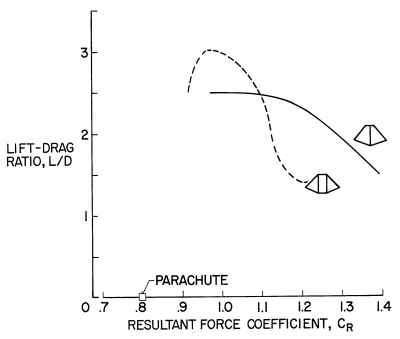A video has been linked. I put it (15:00) to illustrate this topic, as well as a quote from Diehl2013.pdf (page 5) below said video:
We see that CL is counted twice. This is also underlined in Drag power kite with very high lift coefficient, page 291:
Because the power increases cubically with CL and decreases only quadratically with CD,eq,[…]
My question: when CL occurs for the first time in the formula, could it not be a thrust coefficient CT that incorporates the lift and drag coefficients? Intuitively, it could make sense.
For the examples above, considering a usual high L/D ratio and a low CD, the CT would be very close to the CL.
But for crosswind kites with a low L/D ratio, including Magnus effect-based balloons (very high CL and fairly high CD), there would be a difference, certainly not huge, but notable. It may partially be an explain for:
The “resultant force coefficient CR” could be assimilated to the thrust coefficient CT mentioned above. We can see on the curve that for the single-keel NPW wing, this coefficient is 1.3 for an L/D ratio of 2, leading to a CL of about 1.16, and a CD of about 0.58. So there is a small but notable difference between 1.16 and 1.3.
If the use of CT proves to be correct, it could give rise to crosswind kites with a relatively low L/D ratio, and a very high CT (resultant force (thrust) coefficient from very high lift and fairly high drag coefficients), which can look NPW kites, or crosswind Magnus effect-based balloons.

